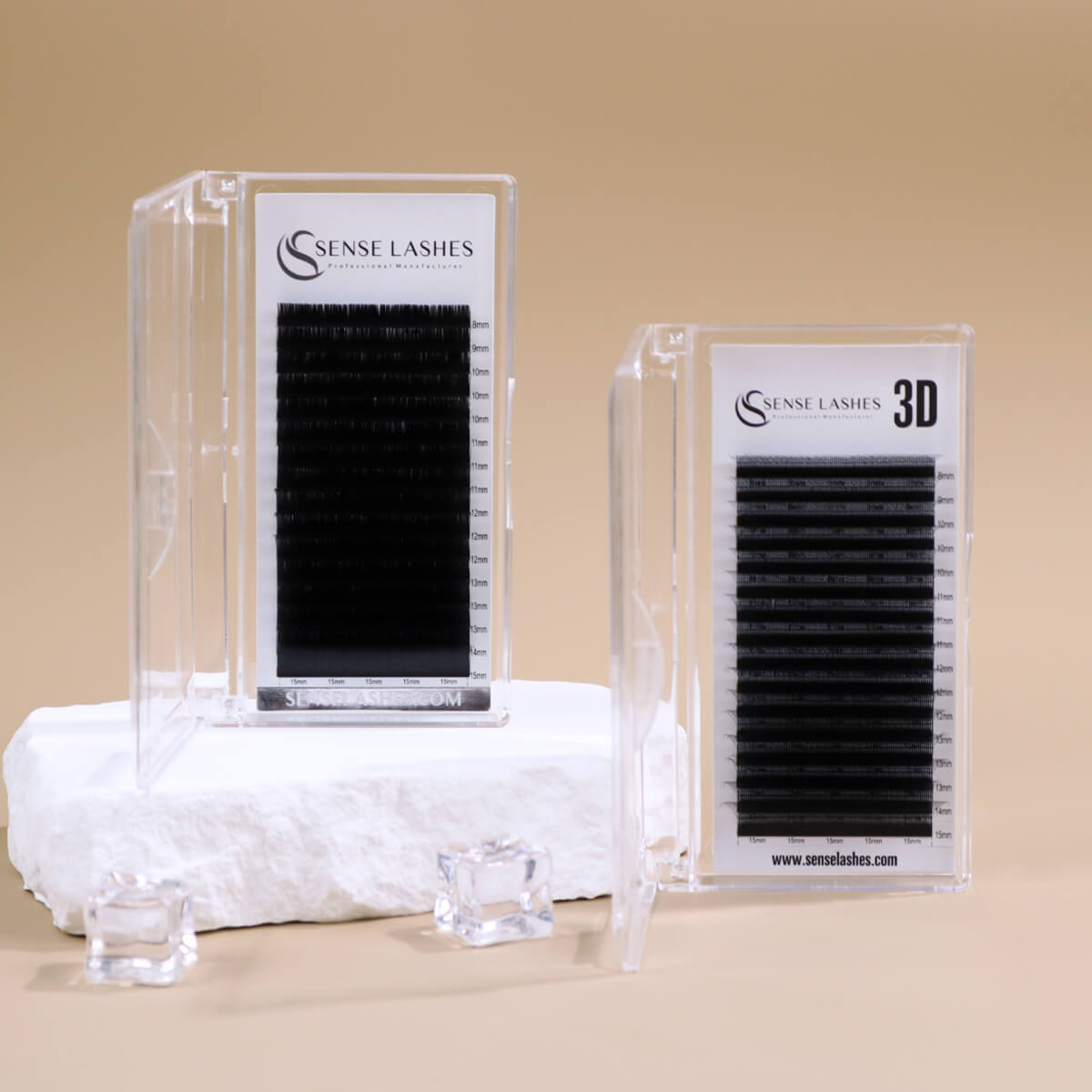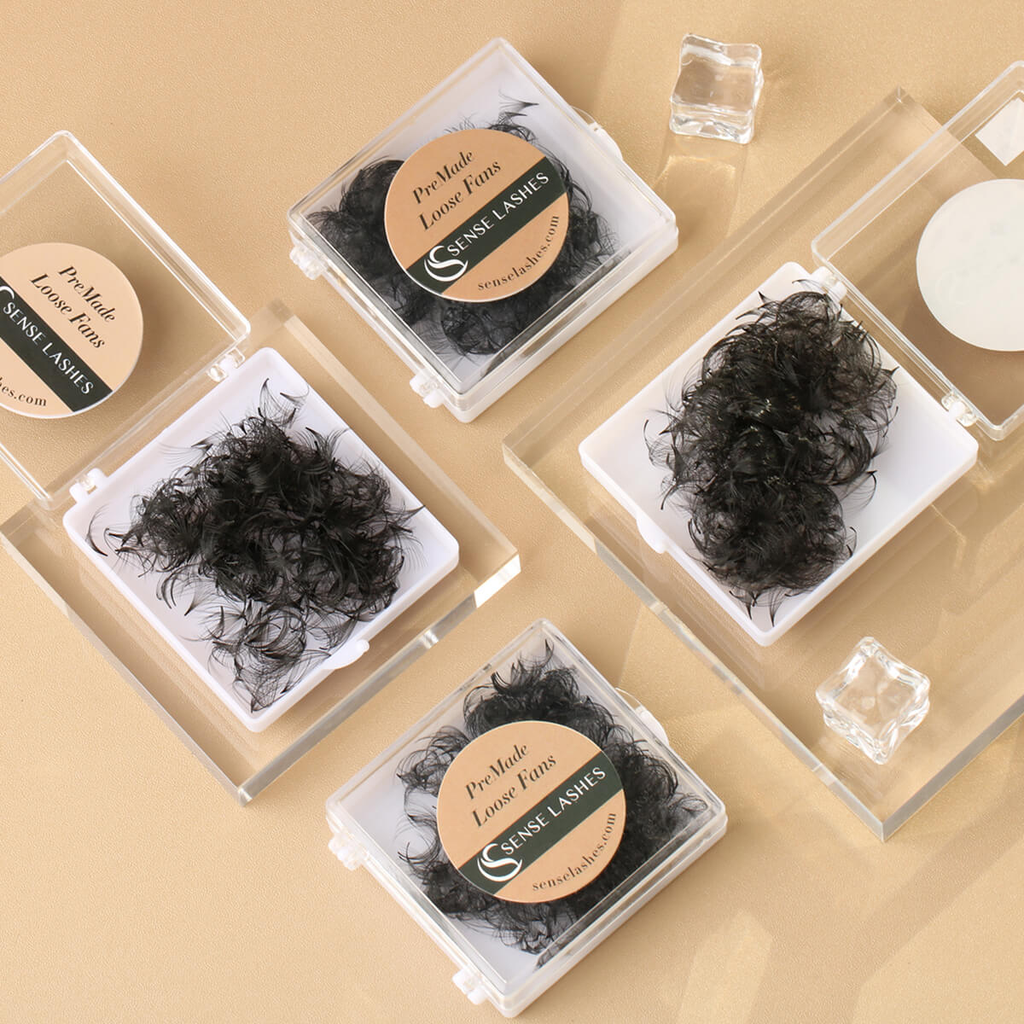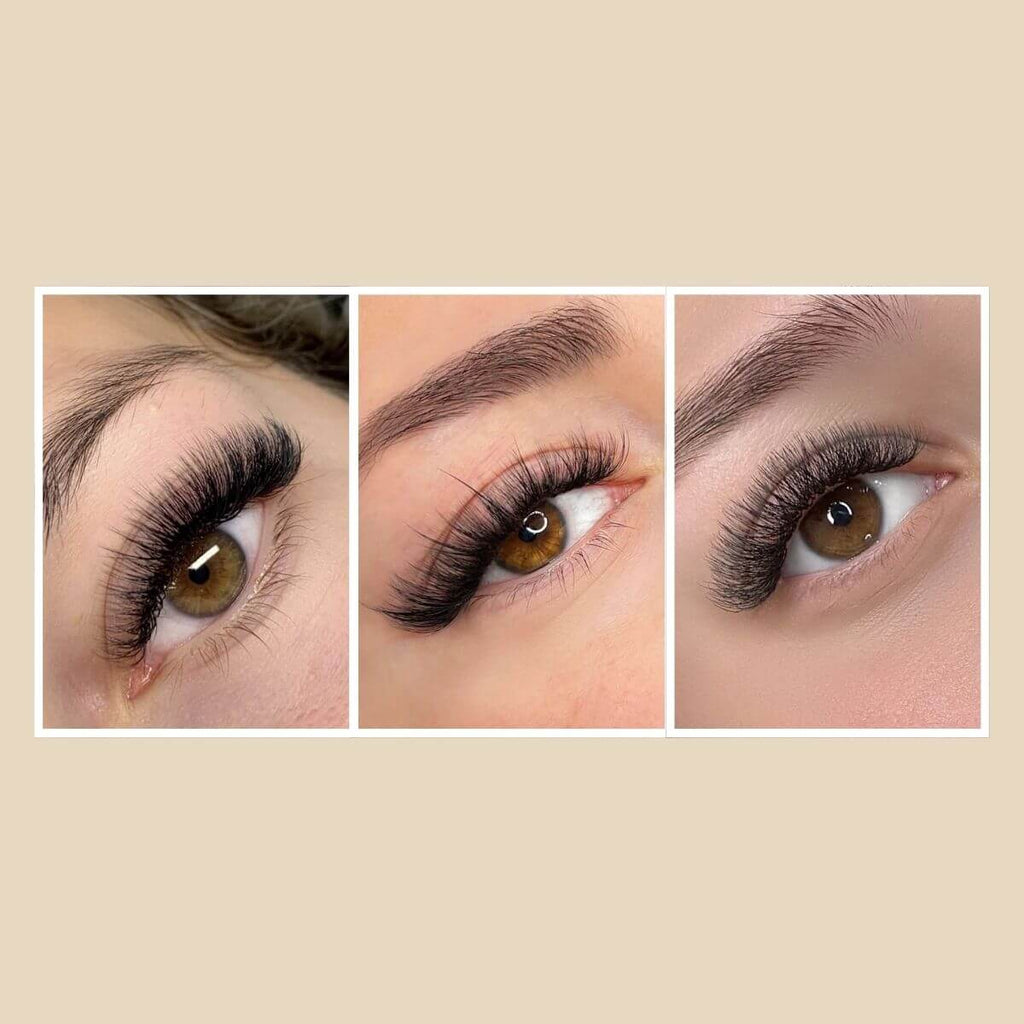Are Eyelash Extensions Safe? Risks, Myths, Care
Quick Answer
Are eyelash extensions safe? Yes—when studios follow a clear protocol: screen for red flags, control eyelash glue and room conditions (humidity/temperature), isolate properly, keep length/weight within natural lash limits, and keep tools and lids truly clean with daily lash baths. If stinging, swelling, or discharge appear, stop and remove immediately, document it, and refer to an eye-care professional; consistent logs and simple aftercare keep sets comfortable and retention high.
Introduction
Clients have one question above all others—are eyelash extensions safe? They are if you're in control of the fundamentals: screen for red flags, isolate with precision, and work eyelash glue in the correct humidity and temperature. Keep lengths and weights charted to natural lash strength so eyes remain comfortable. Clean tools, clear aftercare, and prompt triage if irritation appears safeguard both the client and the studio.
What Should a Safe Lash Studio Include?
Safety is a system, not a hunch. The checklist below turns core requirements into quick, repeatable habits so every room and every tech works the same way—protecting eyes, reducing reactions to eyelash glue, and keeping your business compliant.
| Area | Key Standard | How to Check/Do It | When |
| Licensing & Insurance | Current, documented, visible | Post licenses at reception; keep copies on file; verify general + professional liability policies | Review quarterly |
| SDS Binder | One SDS for every chemical (adhesives, removers, primers, disinfectants) | Store where staff can grab fast; train team to use for first-aid/spills; update when products change | Check monthly |
| Ventilation | Fumes kept low; room within adhesive’s working range | Use source capture or room exhaust; log humidity/temperature vs. adhesive label (e.g., 40–60% RH, 68–75°F—follow your brand) | At open + mid-day |
| Eyewash Access | Reachable in ≤10 seconds, clear path | Post “15-minute rinse” instructions; test flow weekly; keep dust caps on | Check weekly |
| Daily Open (Environment & Setup) | Stable room + clean start | Log RH/°F; adjust with humidifier/dehumidifier; express fresh glue dots; cap between dips; note batch/lot; tools/surfaces disinfected; lined waste bin ready | Every morning |
| Daily Close (Disinfection & Waste) | Proper contact time; safe disposal | Clean → disinfect nonporous tools with EPA-listed product (keep surfaces wet for full label time); discard single-use items; cure leftover glue before tossing; store bottles upright, sealed, away from heat | Every evening |
Print this chart and post it inside each lashing room. Walk the list at open and close, initial the log, and audit weekly—small, consistent steps prevent problems and boost retention. If you’d like branded versions (wall chart + open/close checklists), I can tailor them for your studio.
Client Screening and Consent for Lash Extensions
A quick, consistent screen keeps eyes comfortable and your studio protected. Look for anything that could raise the risk of irritation, allergy, infection, or poor retention. If you spot a red flag, adjust the plan or reschedule—and get clear consent before you start.
Red Flags for Eyelash Extensions: When to Stop and Reschedule
Red Flags — Do Not Lash Today
| Red Flag | Signs / Notes | Studio Action | Rebook When |
| Active eye infection / uncontrolled blepharitis | Red, crusty lids; discharge; burning/itching | Stop service; refer to an eye-care professional | Symptoms are controlled and clinician clears |
| Recent LASIK or other eye surgery | Fresh corneas; surgeon often restricts eye makeup | Remove pre-op; no post-op service until cleared | Surgeon approves (often ≥1–2 weeks for eye makeup) |
| Chemotherapy (current or recent) | Extra-sensitive skin/lashes; fragile regrowth | Avoid extensions; require oncologist approval | Oncologist clears; plan softer, shorter sets |
| Severe dry eye / ocular surface disease | Stinging with fumes; debris build-up along margin | Treat condition first; consider removal if symptomatic | Comfort improves and condition is stable |
| Trichotillomania or compulsive eye rubbing | Pulling target; follicle trauma risk | Book only when behavior is controlled; use light maps | Behavior is controlled; gentle, short sets only |
Consent — What to Cover in 30 Seconds
| Consent Topic | What to Say/Do |
| Risks & limits | Explain irritation, allergy, infection, and traction risks; set safe length/weight for natural lashes. |
| During service | Eyes stay closed; report any stinging or burning right away. |
| Aftercare | Daily lash bath, no rubbing, follow cleanser/makeup guidance. |
| Health history | Record surgeries, eye conditions, pregnancy, chemo, allergies, meds. |
| Sign & log | Client signs informed consent; you log adhesive lot, room RH/°F, and any reactions. |
Bottom line: Screen quickly, say what you’ll do and why, get consent, and document. Print these tables for each room so every tech follows the same steps every time.
Lash Extensions Intake Form and Consent (Copy You Can Use)
How to use:
Print or add to your booking form. Edit for your local laws and insurer requirements.
Client Intake (check all that apply):
- Medications/eye drops: _______________________
Informed Consent (client reads and signs):
“I understand that eyelash extensions involve bonding synthetic lashes to my natural lashes with an adhesive that contains cyanoacrylate. Possible risks include temporary irritation, allergy, infection, corneal abrasion, and natural-lash damage if aftercare is not followed. My artist has discussed set length, curl, and weight suited to my natural lashes, the studio’s hygiene and ventilation practices, and what to do if I feel discomfort. I agree to keep my eyes closed during the procedure, avoid touching/rubbing, and follow the aftercare provided. I will tell my artist immediately if I feel stinging, burning, or pain so we can pause or remove the extensions. I confirm that I have disclosed my medical/eye history truthfully, including recent eye surgery, pregnancy, chemotherapy, or eye conditions. I understand I can stop the service at any time.”
Client Name __________
Signature __________
Date __________
(For your records, keep adhesive lot/batch, room RH/°F at start, and any reactions noted.)
Lash Extensions and Pregnancy: Safer Appointment Tips
Keep sessions short and well-ventilated.
Cyanoacrylate fumes can irritate the eyes and airways; a source-capture setup and good room airflow help keep exposure low for everyone.
Avoid flat-on-the-back positioning later in pregnancy.
After the mid-second trimester, lying fully supine can drop maternal blood pressure (supine hypotension). Use a left-side tilt or side-lying with pillows, and plan extra breaks.
Use softer design choices.
Choose shorter, lighter sets with gentle curls to reduce traction and appointment time. If nausea, dizziness, or back discomfort occurs at any point, stop and reschedule.
Make it a shared decision.
There isn’t a specific medical “green light” for lash extensions in pregnancy. Ask clients to check with their prenatal provider, explain your ventilation and positioning plan, and proceed only if they feel comfortable. For any eye cosmetic, FDA advises extra care to avoid irritation or injury around the eyes.
Clear screening + written consent + sensible pregnancy adjustments reduce reactions and build client trust—while giving your studio a defensible record if problems arise.
0.05 Extensiones de Pestañas Volumen Mega Premium
CURL: C
LONGITUD: MEZCLADO 8-15MM
Eyelash Glue and Room Conditions for Safer Lash Extensions
A quiet room and consistent adhesive equal quieter eyes and better retention. Keep the science straightforward, set up the same, and record everything.
What's in Lash Adhesive (and Why Fumes Don't Equal Strength)
Most lash glues are cyanoacrylate-based—great for fast curing, but the fumes can irritate. More fumes don’t mean a better bond. For sensitive clients, consider carbon-black-free or latex-free options, and avoid hydroquinone-stabilized formulas if needed.
What Temperature and Humidity Should You Strive For?
There is a sweet spot for every adhesive. As a rule of thumb, keep the room between 40–60% RH and 68–75°F, then adhere to your manufacturer's precise range. Too cool/dry slows cure; too warm/humid shock-cures and creates brittle bonds.
How to Prepare the Room and Take Care of Your Glue
Measure with a hygrometer every shift; adjust using a humidifier or dehumidifier as necessary. Squeeze out small glue dots, cap between dips, and renew every 10–20 minutes—or sooner if it strings or thickens. Record batch/lot, date opened, RH/°F, and retention. Keep bottles upright, sealed, cool, and dry.
Lash Extensions Risks and How to Reduce Them
Safety problems usually show up in three ways—irritation, allergy, or infection—or from too much traction on natural lashes. Use the quick flows below to decide what’s happening and what to do next, then keep weight and placement within safe limits to prevent repeat issues.
Irritation vs. Allergy vs. Infection — Chairside Triage and Actions
1. If it stings or burns during the service (likely irritation):
- Stop, rinse with sterile saline, and fan softly.
- Re-pad/tape (stay away from the waterline), alter eye/hand position, reduce fume exposure (new dot, smaller bead, improved ventilation).
- Next visit: barrier cream where pads touch skin; attempt a slower adhesive or function closer to its ideal RH/°F.
2. If swelling, intense itching, or hives appear within hours (suspected allergy):
- Stop right away. Remove extensions gently (gel remover, eyes closed), rinse, and record.
- Consult a medical professional; do not reapply without provider approval.
- Flag the client record (suspected carbon black or cyanoacrylate sensitivity).
3. If redness, pain, discharge, or crusting are present (infection signs):
- Never lash. No removals on inflamed eyes unless advised by a clinician.
- Consult an eye-care professional and reschedule only after clearance.
Traction and Weight Management
Keep the set within what the natural lash can carry.
- Length delta: usually ≤ 2–3 mm beyond the natural lash; go shorter on inner corners and weak areas.
- Curl tension: stronger curls increase leverage—reduce length/diameter accordingly.
- Density mapping: add volume only where naturals are strong; lighten where they’re fine or sparse.
Volume Equivalence (area ≈ diameter²):
- 2D 0.07 ≈ 0.10 classic
- 3D 0.07 ≈ 0.12 classic
- 4D 0.07 ≈ 0.14 classic
- 6D 0.05 ≈ 0.12 classic
As a safe baseline for average lashes, keep sets at or under ~0.12-classic equivalent and go lighter on fragile zones.
Flawless Application = Safe Application
- Isolation: true 1:1; zero stickies. Release each bond only after it sets.
- Lid distance: attach 0.5–1 mm from the skin; adhesive must not touch the eyelid.
- Pad/tape placement: secure lower lashes without touching the waterline; adjust if the client feels pressure.
- Direction control: align extensions with natural growth to avoid lash collisions and poking.
- Adhesive handling: tiny beads, fresh dots every 10–20 minutes, cap between dips, work inside the glue’s RH/°F range, and ventilate well.
Print this page and keep it at each station—fast decisions, safer sets, better retention.
Are Eyelash Extensions Safe? Myths and Facts About Eyelash Glue and Client Care
Yes, eyelash extensions can be safe if you screen for red flags, isolate properly, keep length/weight within natural limits, and manage eyelash glue and room conditions (humidity/temperature). Apply these quick facts and steps to keep sets comfortable, clean, and retention-friendly.
1. Do Eyelash Extensions Ruin Natural Lashes?
- Fact: Breakage is caused by excessive traction, inadequate isolation, or too-heavy sets—not by extensions themselves.
- Do this: keep the length within ~2–3 mm of the natural lash, match curl/diameter to the strength of the lash, and have true 1:1 isolation to prevent stickies and pulling.
2. Do Eyelash Extensions Have to Stay Dry?
- Fact: Adhesive requires time to set, followed by gentle cleaning.
- Do this: minimize heavy splashing in the initial few hours, then daily wash with a lash-safe cleanser to minimize debris and blepharitis risk. Clean lashes = greater comfort and retention.
3. Do Patch Tests Prevent All Allergies to Eyelash Glue?
- Fact: Patch tests can fail to detect cyanoacrylate reactions; they are not foolproof.
- Do this: control exposure—strong ventilation, minimal adhesive beads, new dots, and discontinue/remove at once if swelling, hives, or severe itching occur. Record and consult a clinician.
4. Are Eyelash Extensions Off-Limits During Pregnancy?
- Fact: Not automatically. Appointments should be adjusted.
- Do the following: employ good ventilation, opt for shorter/lighter sets, book shorter sessions, and eschew extended periods in the supine position—particularly in later pregnancy. Employ informed consent and defer to the client's prenatal provider.
Pegamento para extensiones de pestañas de diamante de 0.5-1 segundo
Hygiene and Infection Control: What to Disinfect vs Dispose
Clean tools and clean lids prevent most problems you’ll see at the bed. Use simple, repeatable steps: clean first, disinfect correctly, and throw away anything meant for one-time use.
Tool Levels: Clean → Disinfect → (Sometimes) Sterilize
- Clean: Remove visible material from metal instruments (tweezers, scissors) with soap and water. Disinfection is only effective on clean surfaces.
- Disinfect: On nonporous instruments that come in contact with intact skin/hair, use an EPA-registered disinfectant and wet the surface for the entire label contact time (e.g., Barbicide liquid = 10 minutes; Barbicide wipes = 2 minutes).
- Sterilize (if necessitated by local regulations): Those items that would come in contact with mucous membranes or non-intact skin need high-level disinfection or sterilization. Lash tweezers usually come in contact with intact skin/hair, so thorough disinfection is the norm; some studios include autoclave sterilization as an additional margin. Take guidance from your state board.
What to Dispose vs. Reuse
- Single-use: discard after every client. Eye pads, tape, mascara wands/spoolies, microbrushes/lip wands, cotton products, wood sticks, glue rings, and all porous items. Never double-dip into product; decant adhesive to a stone/ring. (Then dispose of the ring.) Use new disposables for each eye as required.
- Reusable: disinfect between clients. Metal tweezers, scissors, stainless tools, nonporous palettes/tiles. Record a log of contact time met for each batch..
Lash-Bath Station Setup and Lid Health
- At the bed: lash-safe foaming cleanser, saline rinse, disposable cleansing brush (or disinfected brush per client), lint-free towels, small fan. Pre-clean lids/lashes prior to application, then instruct clients on a daily lash bath at home to minimize debris and blepharitis risk.
- Look for Demodex hints (pruritic lids, "cylindrical dandruff" at bases): You're not dealing with a disease—send to an eye-care specialist for diagnosis and treatment; regular lid hygiene still assists comfort. Bottom line: clean → disinfect with proper contact time → discard disposables. Combine that with daily lid hygiene instruction to keep eyes comfortable and your studio compliant.
Bottom line: clean → disinfect with the right contact time → toss disposables. Pair that with daily lid hygiene education to keep eyes comfortable and your studio compliant.
Documentation, QA, and Troubleshooting
Basic logs transform guessing games into solutions. Utilize the three logs provided below to identify patterns quickly and safeguard your studio.
Retention Audit
Monitor four areas whenever retention falls:
- Environment: room RH/°F vs adhesive range.
- Prep: lash bath, primer application, oil/makeup upon arrival.
- Placement: isolation, bond distance (0.5–1 mm), bead size.
- Client habits: sleeping side, steam, oil cleansers, picking/rubbing.
Record the problem, the adjustment you performed, and the outcome at the next fill.
Adhesive Log
Record for each shift/bottle: date opened, brand/lot, room RH/°F, dot refresh interval, cure behavior, retention outcome. Store upright, sealed, cool; retire bottles by the manufacturer's shelf-life.
Photo & Adverse Event Log
Take before/after standardized photos (eyes closed, top, side, macro). Note any irritation/allergy, what was done, referral made, and follow-up. These records enhance training and safeguard your company.
4 FAQs on Eyelash Extensions
Q1: Can I work on mild blepharitis?
No. Don't do extensions on an active flare. Have the client treat and stabilize first, then schedule when lids are clean and calm. Educate on a daily lash bath routine to prevent future build-up, and refer to an eye-care professional if symptoms persist.
Q2: Client stings on day 2—what now?
Act quickly.
- Swelling/itching/hives: treat as potential adhesive allergy—remove safely, document, and refer.
- Pain, discharge, increasing redness: suspect infection—refer urgently.
- Minimal irritation alone: clean the lash line, recommend a cold compress, and examine the room RH/°F and eyelash glue handling prior to the next fill.
Q3: What’s my plan if a client arrives wearing contacts and heavy liner?
Ask them to remove contacts prior to starting. Perform a deep, oil-free clean of lashes and lids. Only reinsert lenses if eyes feel normal after service. Advise clients to refrain from heavy makeup on the lash line and to clean daily.
Q4: How do I handle a suspected cyanoacrylate allergy returning for removal only?
Schedule a brief removal-only visit. Apply a gel/cream remover under good ventilation, with eyes closed, rinsing thoroughly, and without reapplying extensions. Record products and duration, recommend medical follow-up, and flag the chart to prevent future cyanoacrylate exposure.
Make Every Set Low-Risk — Ask for the Printable Toolkit
Get the room right, keep tools absolutely clean, and select lengths and curls that harmonize with the natural lash. That's how you minimize risk and maximize retention. Good aftercare and prompt triage when irritation appears seals the deal.







Dejar un comentario